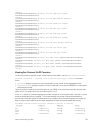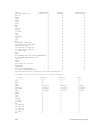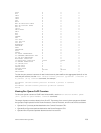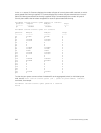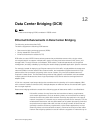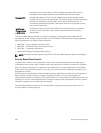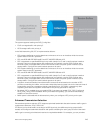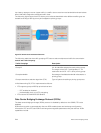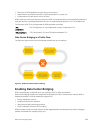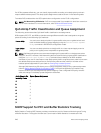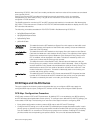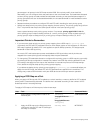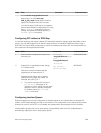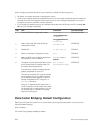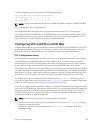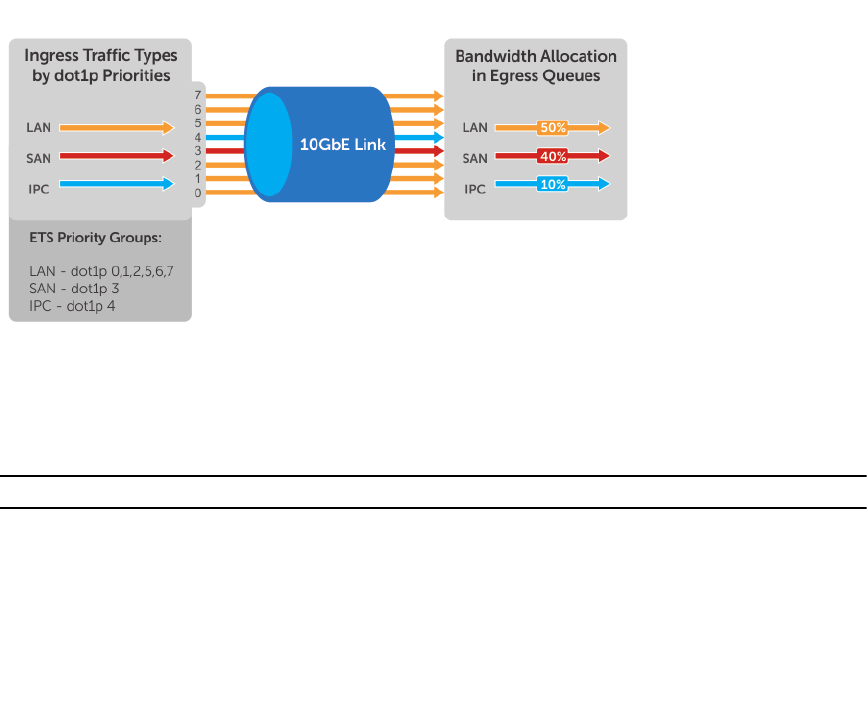
low-latency storage or server cluster traffic in a traffic class to receive more bandwidth and restrict best-
effort LAN traffic assigned to a different traffic class.
The following figure shows how ETS allows you to allocate bandwidth when different traffic types are
classed according to 802.1p priority and mapped to priority groups.
Figure 26. Enhanced Transmission Selection
The following table lists the traffic groupings ETS uses to select multiprotocol traffic for transmission.
Table 9. ETS Traffic Groupings
Traffic Groupings Description
Group ID A 4-bit identifier assigned to each priority group.
The range is from 0 to 7 configurable; 8 - 14
reservation and 15.0 - 15.7 is strict priority group..
Group bandwidth Percentage of available bandwidth allocated to a
priority group.
Group transmission selection algorithm (TSA) Type of queue scheduling a priority group uses.
In Dell Networking OS, ETS is implemented as follows:
• ETS supports groups of 802.1p priorities that have:
– PFC enabled or disabled
– No bandwidth limit or no ETS processing
• ETS uses the DCB MIB IEEE 802.1azd2.5.
Data Center Bridging Exchange Protocol (DCBx)
The data center bridging exchange (DCBx) protocol is disabled by default on the S4810; ETS is also
disabled.
DCBx allows a switch to automatically discover DCB-enabled peers and exchange configuration
information. PFC and ETS use DCBx to exchange and negotiate parameters with peer devices. DCBx
capabilities include:
244
Data Center Bridging (DCB)




